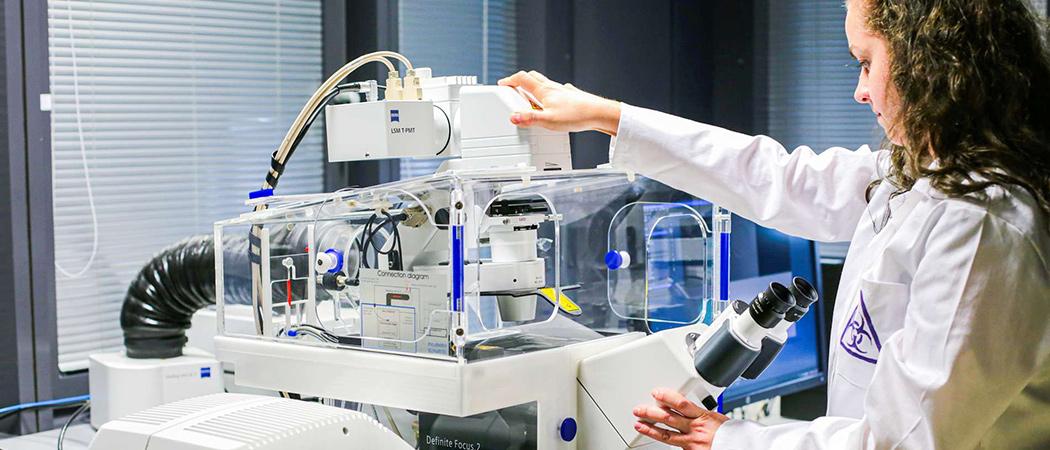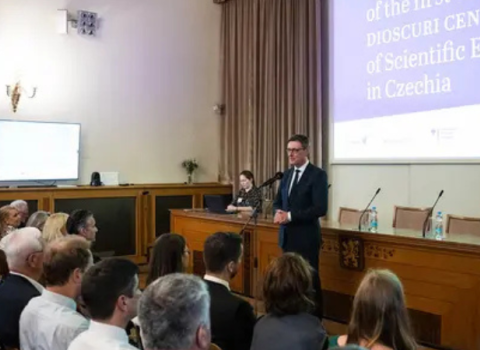On joining the EU in 2004, the country had a vision of using EU structural funds to build R&D facilities that could stand shoulder-to-shoulder with the best in Europe. Fifteen years later, Czech science is reaping the benefits

CEITEC Core facilities. Photo: www.ceitec.eu
It may be famous for its beer, love of hockey and castles, but in science circles the Czech Republic is increasingly known as a success story for research infrastructures. Back in the late 2000s, the country laid out a strategic plan to use EU funding to build these facilities. Here’s how it happened.
The Czech Republic joined the EU in 2004, alongside nine other new members. Around the same time, the EU started mapping its research infrastructures, having launched the European Strategy Forum on Research Infrastructures (ESFRI) bringing together member states and the Commission, a few years prior. The Czechs joined in on the efforts, and when the new EU seven-year budget was being negotiated in the lead up to 2007, the country seized the opportunity to invest.
“That was the first big round of funding from the EU, from structural funds, and there was a clear decision of the Czech government that a big chunk of the money has to go into research,” recalls Ondřej Hradil, research infrastructures coordinator at the Masaryk University in Brno, previously core facility coordinator at CEITEC, a leading life and material science research institute, created as part of the push for new facilities. “There was a notion to establish something big.”
All this required foresight, which came largely thanks to David Uhlíř, currently chief strategy officer at the South Moravian Innovation Centre, who had just spent a few years working for the European Commission at the interface between the research and the regional policy directorates. In 2007, at the end of his secondment as an international expert, he got a call from a friend who had become a deputy minister and came back to help the country devise a plan to give its research system a boost.
At the time using structural funds to build research infrastructures was a novel idea. There was a lot of money to spend, and Uhlíř saw it was a chance to build big. “We realised it was an opportunity to dramatically upgrade the research infrastructures in the country if we did it well,” he told Science|Business.
At first, the Commission was not convinced the plan was in line with the structural fund’s objectives of promoting economic and social development of less advanced member states. Investment in research facilities, many of which would support fundamental science, wouldn’t bring benefits straight away and officials were hesitant to sign off the spending.
But the Czechs persisted with their plan to build a handful of top-notch facilities that play in the European league, such as the Extreme Light Infrastructure (ELI) and CEITEC, and a number of regional centres that would be closely linked to local industry. The country also introduced a performance-based method for funding these infrastructures, which obliged the facilities to generate extra income from research contracts and encouraged involvement in the EU’s research programmes. “That sort of changed the attitude of academia that until then was inward looking,” says Uhlíř.
Hradil doesn’t hold back praise for Uhlíř’s vision. “It was not just a stupid way of administrating structural funds by checklist. He was fighting a lot with the system, with [the directorate for regional policy], to make something that makes sense for research,” says Hradil.
Changing attitudes
Today, the Czech Republic is home to a number of leading infrastructures and is an important voice for science facilities in Europe. Last week, the International Conference on Research Infrastructures came to Brno, where the Czech government led an effort to adopt a declaration for the development of a global system of research infrastructures. This was a key milestone of its six-month presidency to the EU.
It took a while to adapt to the new, EU-focused system, but eventually researchers and innovators started building up international networks and experience in applying for EU funding, which boosted the country’s participation in the EU’s framework programmes.
On regional level, the big infrastructures transformed how things were done. CEITEC, in Brno, the country’s second largest city, adopted an open door policy encouraging the local, national and international R&I community to use its facilities. Now, it is feeding into local success stories. Today, companies in Brno are responsible for one third of the world’s production of electron microscopes. Having the right infrastructures for R&D helped achieve this.
Consistent backing from the government played a big role in enabling the facilities to become anchors in local ecosystems. “One of the critical things we managed to negotiate with the ministry of finance was that a part of the budget would be set aside to fund the sustainability of these structures,” said Uhlíř.
There were many visionaries, such as Uhlíř, building on examples and best practices from abroad, which helped transform the research system. “It’s about money, it’s about setting up lighthouses, but it’s also about changing the mentality of people,” said Hradil.
The next frontier
The next frontier for Czech science is ensuring it has the talent to run and make use of the research infrastructures.
This is not the country’s strong suit. “We need to and should have started much earlier, systematically developing the skills for these infrastructures and had an active policy for training people and attracting them from elsewhere,” said Uhlíř. “We haven’t done any large-scale national initiative in that respect, which I think should have been done a few years ago.”
In addition, there should be a bigger effort to cultivate a wider ecosystem around these infrastructures, notes Uhlíř. While there have been significant improvements, he hopes to see more spin offs created and more value extracted from the labs in the country.
Hradil agrees training is the next frontier, pointing to the need to revamp PhD education in the country, including better pay and working conditions for students.
The Czech success did not go unnoticed by other countries in the class of 2004. A few years later, with the next batch of structural funds, Poland, Slovakia and others followed suit in building research facilities, using the Czech case to justify the spending.
Meanwhile, Czech science continues to advance. The country’s young scientists secure more and more European Research Council grants, among other indicators of success. “The new generation is going to start this transition,” said Hradil. “The established professors over 50 are not going to change the world, but they shall be courageous enough to let the new generation in and support it.”





 A unique international forum for public research organisations and companies to connect their external engagement with strategic interests around their R&D system.
A unique international forum for public research organisations and companies to connect their external engagement with strategic interests around their R&D system.